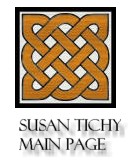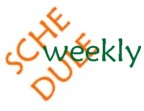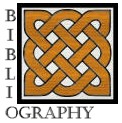ENG
LISH
660:
002
Modernist Women Poets:
Mina Loy, Marianne Moore, Lorine Niedecker
Assign
RGE
MAS
ON
UNI
VER
SITY
Why is there no long research paper for this course?
Because I want you to really read all three poets and keep on really reading right to the end of the semester.
So what do we have to do instead?
Complete two shorter projects for each of the three poets we're reading: an anthology and a short paper.
Guidelines are essentially the same for each of the three poets.
Due dates are on the Schedule, linked above.
Assignment One: Anthology
For each poet, create a mini-anthology of 10 poems. Design your selection as one of following:
- a general introduction to this poet, such as might be used in a course that included several poets;
- an introduction to one particular aspect of the poetry, such as might be used in a course on a certain topic (e.g. satire, gender, poetic form, Modernism, poetry & visual arts, nature poetry, Objectivism etc.;) or
- poems you would concentrate on if writing about this poet for your MFA exam -- i.e. poems you consider key to an advanced understanding of this poet.
- If you are designing your anthology for use with high school students or some specialized audience (e.g. women at a homeless shelter) please talk to me about your project. Do not write an introduction aimed at this audience. No matter whom your imagined course is designed for, your introduction must assume an audience of your peers and your instructor.
Assignment Two: Paper
For each poet, develop your discussion ideas, reading notes, and presentation notes (if you presented) into a 1750-2500 word paper, in one of three ways:
- Develop two
approaches to a single poem using different critical angles. At least
one angle must be derived from criticism read for the class.
- Write on two poems
from one critical angle, derived from criticism read for class.
- Develop an
exhaustive reading of a single poem. "Exhaustive" means you have
examined the poem's diction and etymology, investigated its social and
historical references, meditated on the implications of its form,
including rhyme & sound, investigated its formal connections to
other poems or to visual art, and placed it in the poet's biography.
Ideally, this process will lead you to choose a critical angle from
which the poem might be fruitfully discussed. Given the length
restrictions of this paper, it's likely you won't have space to develop
that final angle, but you can indicate your reasons for recommending it.
Whatever critical angle(s) you choose, you must in some way define your project. Be brief, but be clear. For example, to write about Loy...
- you might extend Elizabeth Frost’s analysis of “mongrel diction” to two poems she doesn’t discuss, and thereby reach some conclusion about its general applicability to Loy;
- you might analyze two poems in relation to the rhetorical and typographical features of the manifesto as spelled out by Perloff and exemplified by the Futurist manifestos on the Futurist web site;
- you might examine one poem in relation to manifesto rhetoric/typography AND in relation to painterly techniques, trying to separate the two or bring them into relation;
- you might examine one poem in relation to Ellen Stauder’s take on surface-sound as “polish” AND in relation to the idea of sound play and lexical play as “surplus meaning,” trying to decide, perhaps, if these are complementary or antithetical ideas;
- if you know
something about Decadent aesthetics, you might analyze how
pseudo-Decadent elements interact with Feminist or Futurist elements in
a single poem;
- if you are
interested in poetic form, you might analyze the sound, rhyme,
lineation, rhythm, punning and play in a poem, then bring that reading
into dialogue with one of our critics;
- if you know
something about discourse theory, you might invetigate how a poem makes
its reader perform as subject of the enunciation as well as subject of
the enounced, and bring that into relation with one of our critics;
- you might refute a critic’s reading of a poem, being sure to demonstrate along the way that you understand that reading AND being sure to state what you are looking for/at in your own reading.
Whatever your topic, direct your paper toward a reader who is at least as sophisticated (re: poetry) as yourself.
- Don’t waste space explaining, for example, what a metaphor is. This would be relevant only if you were contesting “metaphor” as a category or comparing metaphor with some other concept or trope.
- Do define your terms, however. In the first hypothetical topic above you would need to state your understanding of Frost’s analysis before launching into an application. For the Decadence topic you would have to define what you mean by that term. And so forth. If you are about to perform a “Lacanian” or a “Marxist” reading of a Loy poem, you must be specific about what those terms mean. What kind of “Marxist criticism” do you have in mind, for example? If you are a novice at this kind of analysis, you might want to limit your terms to a specific application. For example, “I am going to analyze this poem in the terms set forth by so-and-so in his essay on poetic economy.” If necessary you can attach said essay to yours.



